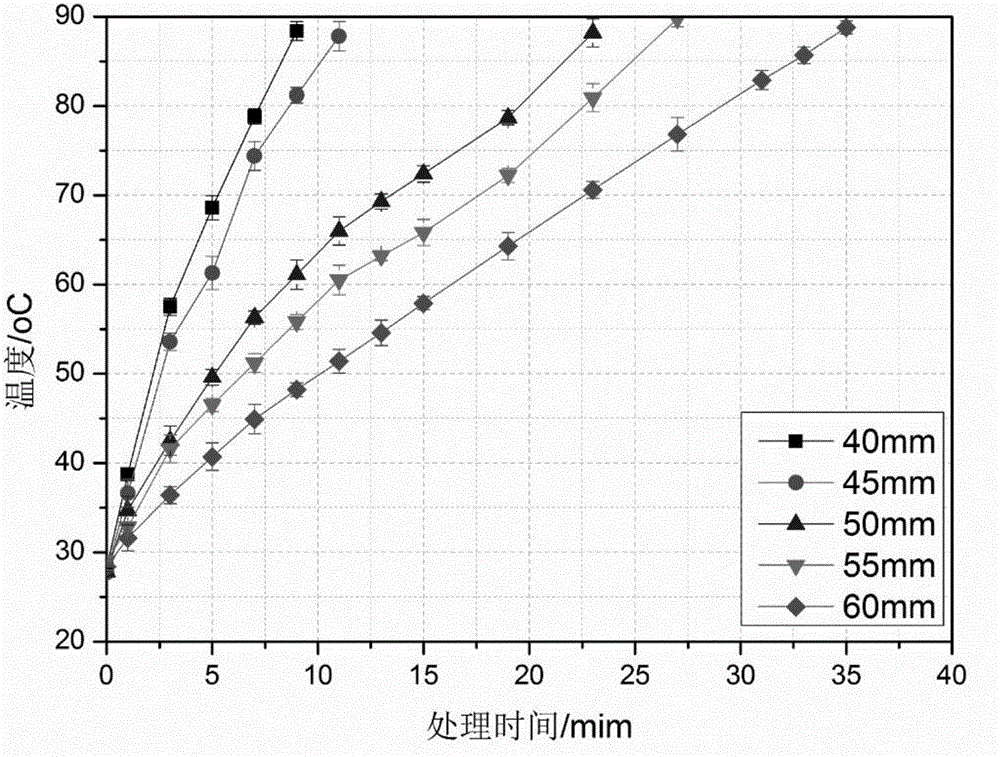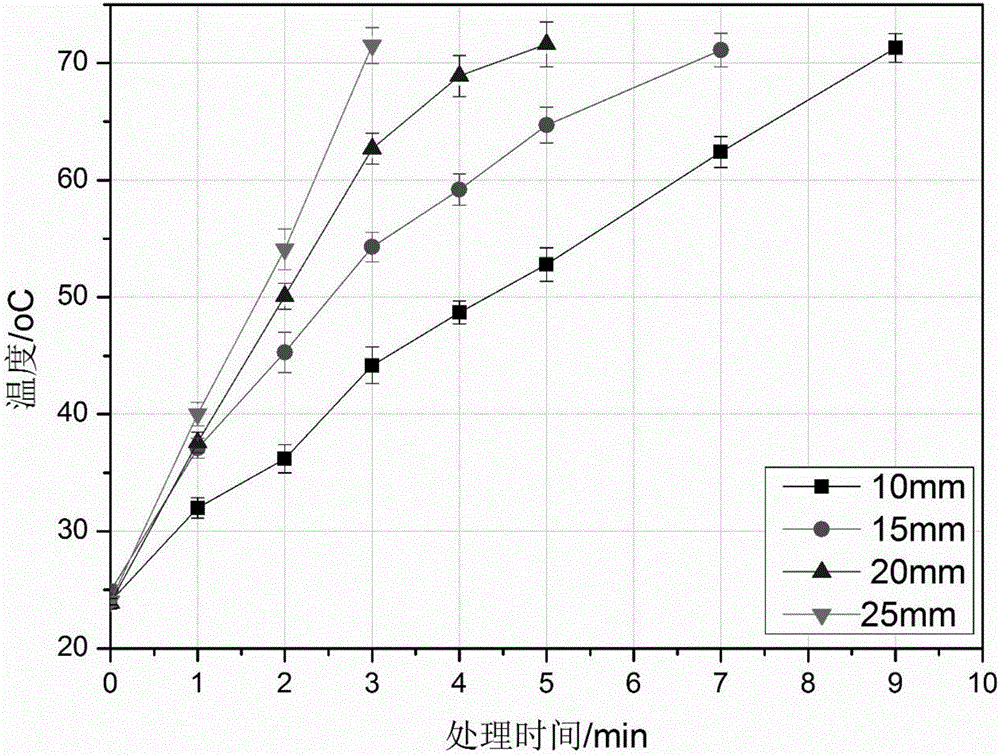Insect disinfestation method performing radio frequency treatment on grain
A radio frequency treatment and radio frequency technology, which is applied in food preservation, food science, heating and preserving seeds, etc., can solve the problems of microwave energy consumption increase, reagent residue, uneven heating, etc., and achieve the effect of thorough insecticide and short treatment time
- Summary
- Abstract
- Description
- Claims
- Application Information
AI Technical Summary
Problems solved by technology
Method used
Image
Examples
Embodiment 1
[0021] The application of radio frequency insecticidal treatment device (disclosed in the invention patent application with application number 201510234110.9) is used to process grain, and the specific steps are as follows:
[0022] (1) Pretreatment: select grains with complete grains, remove impurities and rotten grains therein, then encapsulate the samples in polyethylene plastic bags, and store them in a refrigerator at 4°C;
[0023] (2) Insertion of test worms: insert 25 live, robust test worms (mainly adults) of the same growth stage into polyethylene plastic containers containing 1 kg of grain (sterilized with ultraviolet light in advance);
[0024] (3) Cultivation of samples: putting the grains inserted into the test worms into a temperature of 28° C., and expanding and cultivating for 30 days in an incubator with a relative humidity of 40%;
[0025] (4) Constant sample temperature: Before starting the experiment, take another sample to be used in step (1) and place it ...
Embodiment 2
[0031] Grain is processed with reference to the method of embodiment 1, and its difference is, the cooling of step (7) sample: after radio frequency treatment, the sample that will be sealed and packaged with polyethylene plastic bag is placed on the natural condition that surface air velocity is 0.2m / s cooling down;
Embodiment 3
[0033] Grain is processed with reference to the method of embodiment 1, and its difference is, the preparation of step (5) experimental sample: in step (3), select live, robust adult 20 respectively to insert into the polythene that constant temperature sample is housed. In a vinyl plastic bag (UV sterilized in advance);
[0034] Step (6) RF treatment: place the sample bag containing adults on the conveyor belt at the center of the pole plate under the radio frequency treatment chamber, the operating frequency of the radio frequency treatment device is 27.12MHz, the power is 6Kw, the distance between the pole plates is 60mm, and the sample thickness The temperature is 25mm, the treatment time is 210s, the auxiliary temperature in the radio frequency treatment chamber is 50°C, the auxiliary temperature is provided by hot air ≥ 50°C, and an external hot air generator can be selected to collect the ambient air and pass it through a 5.6Kw electric heater Heating to the set tempera...
PUM
 Login to View More
Login to View More Abstract
Description
Claims
Application Information
 Login to View More
Login to View More - R&D
- Intellectual Property
- Life Sciences
- Materials
- Tech Scout
- Unparalleled Data Quality
- Higher Quality Content
- 60% Fewer Hallucinations
Browse by: Latest US Patents, China's latest patents, Technical Efficacy Thesaurus, Application Domain, Technology Topic, Popular Technical Reports.
© 2025 PatSnap. All rights reserved.Legal|Privacy policy|Modern Slavery Act Transparency Statement|Sitemap|About US| Contact US: help@patsnap.com



